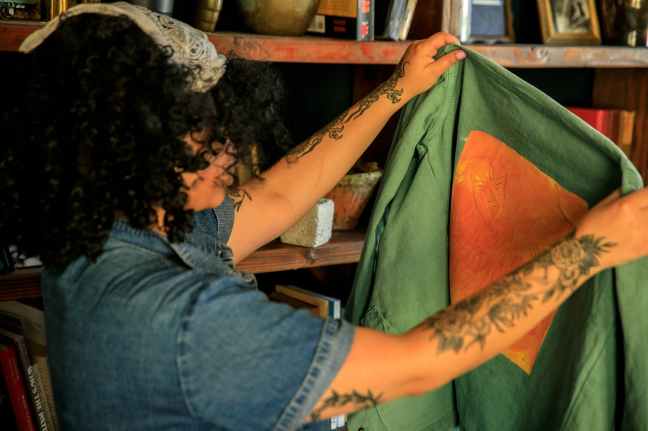Elaine O’Connor and David Mongey of the Event Industry Association, Angela Dorgan and Aideen Howard of the NCFA, Shane Dunne and Sophie Ridley of EPIC, together made a strong and compelling case at the Oireachtas Committee Meeting – Arts and Entertainment Sector 30/6/20 , and massive congratulations are due to them.
The members of the committee were sympathetic to the arguments they put forward. The questions asked by the committee members, however, left two distinct impressions on me:
First: the committee did not appear to have a complete picture in their head of the workings of the arts and culture sector, or at best had a very incomplete picture. Their questions lacked a sense of what was going on, of what life is like in here, of the complexity of how it works, of how the money flows, of the role and extent of state funding, etc.
The second impression – and this is purely subjective – is that unless the committee gets a really clear picture of the sector then sympathy may mark the end of its response. Complexity does not sit well in a political culture that favours the simple, clear deliverable action that doesn’t have a big up front cost, the quick fix and the short term result.
So this post is for the committee – its a map of the Culture and Creative Sector in Ireland, based on the figures in the Indecon 2010 report and in the EY report for the Arts Council’s Expert Advisory committee. If you click on the drawing below it gets bigger.


The widest circle – the blue one – represents the “Creative Industries”. It has a GVA of €4.7 billion, and directly employs about 50,000 people. It is heavily subsidised through Enterprise Ireland, Screen Ireland, the TV License Fee and an array of tax breaks and corporate tax loopholes. The “industries” in this circle include (according to the Indecon report) Software, Literature and Publishing, Radio and Television, Advertising , Film and Video – however, International definitions of Creative Industries include a lot more, such as architecture, craft industries, music recording and distribution etc.
The green circle is the “Wider Arts Sector”. It has a Gross Value Added of €715 million, a direct expenditure of a €1.2 billion, and direct employment of 13,330 people. The wider arts sector includes everything from major concerts, commercial galleries, spoken word in pubs, stand up comedy, pub gigs, buskers, non funded theatre, etc, It’s a big sector, and carries the burden of taxation (its collective tax bill of €306.8 million is almost equal to the department of culture’s total expenditure). The wider arts sector receives almost NO funding directly and is pretty much entirely dependent on sales.
The red circle is the “Arts Council Funded Sector”. It has a direct expenditure of €151.5 million, and 1700 jobs. This sector includes all the clients of the Arts Council. Its important to understand that the Funded Arts Sector is only partially funded and is heavily reliant on sales which account for almost 50% of its turnover.
The artists and the crew – the people who actually make the stuff that we associate with the arts or the “Culture and Creative Sector” do not have jobs in any of these sectors.
And it’s really important we have that clear in our heads, so here it is again: The artists and the crew – the people who actually make the stuff that we associate with the arts or the “Culture and Creative Sector” do not have jobs in any of these sectors.
They survive on short term contracts, bursaries, sales and – in very rare cases – copyright. If you look back at the picture you can see that these people move between the different circles, picking up contracts and making sales wherever they can – sometimes in the Arts Council Funded sector, but mostly in the unfunded Wider Arts Sector, and occasionally in the big blue of the Creative Industries.
There are no full time jobs for artists and crew, and this point cannot be stressed enough – so when we say that the wider arts sector has 13,000 jobs the majority of that is full time equivalents – so there are way more people eking out a living than 13,000! And when we say there are 1700 jobs in the Funded Arts Sector, less than 50% of those jobs represent occasional contracts and bursaries for artists.
Like all diagrams this one is incomplete, and there are a few more important elements to consider.
First the role of local authorities: collectively the local authorities spend about the same as the Arts Council through their arts office budgets (but with huge disparities from county to county). Their spend is felt across the Arts Council Funded sector and the Wider Arts Sector. For example an awful lot of individual artists and companies not funded by the Arts Council use the network of local authority Arts Centres (about 5-10% of the programme in the arts centers is Arts Council Funded Clients, so the rest of the programme comes from the Wider Arts Sector).
Second, all three sectors depend – to a lesser or greater extent – on sales. Arts Council funded clients need to find approximately 46% of their collective turnover from sources other than the Arts Council. In the Wider Arts Sector they are almost entirely dependent on sales with some debt finance (and some equity) , while the creative industry sector has the double advantage of significant state aid and significant sales (although not for all companies in the sector).
What’s important for the committee to understand is that the Arts Sector in total is substantial, and the current channels of direct state funding are directly supporting only a very small part of it, but all government policy and debate is focused on that small part as if it were the whole.
When we understand the complexity of this picture we begin to understand why so many artists feel excluded, disrespected, undervalued etc. The state money that goes into the red circle benefits a very small number of artists in an infrequent fashion, leaving the rest to chase and make work in the green circle.
And that’s the map of the culture and creative sector that is currently facing an extreme crisis. As this crisis unfolds books will still be written and published, paintings sold, music and films streamed and released in cinemas and on TV etc. However, events requiring audiences to gather in confined spaces have stopped and cannot resume in any cost effective way.
Also, remember that we are looking at spiralling unemployment throughout the wider economy combined with the collapse of the tourist sector. In this context the harsh reality of EY’s assessment, that people will reduce their ‘non-essential expenditure, such as on the Arts, in anticipation of job insecurity” starts to make sense.
Large parts of the funded, wider and creative industries are experiencing the collapse of their sales. If that continues for much longer the wider arts sector will collapse and its tax revenue will vanish and loans will default. The funded sector cannot support the 13,000+ people working in the wider sector, therefore the potential for widespread unemployment is huge and with it the collapse of demand in the economy, defaulting on mortgage repayments, personal loans, credit card debt etc., and further demands on the welfare budget.
The €20 million additional funding to the Arts Council this year (and the €30 million ask for next year) will only partially replace the lost sales revenue, so that sector will continue to feel the strain. The greatest negative impact will be felt in the Wider Arts Sector so the questions of how to support that, and how to support the artists and crew who can no longer sell their skills and talents in any of the sectors, become paramount.
How can the government effectively respond to this crisis? The proposals put forward by the NCFA and Epic are all necessary, but more is needed, so are there additional solutions that can be added to the mix of additional grants and funding?
The first thing to realise is that the Wider Arts Sector is rich in assets: lighting rigs, scaffolding, stages, paintings, manuscripts, playscripts, recordings, songs etc. One possible way forward is to transfer all assets to government. (They can borrow at close to 0% from the ECB, or request funding from the EU rescue package. Because the government take ownership of the assets in exchange for the cash their balance sheet is unaffected. They could then agree a storage fee with the owners of the assets. This releases a significant amount of cash into the sector directly into the hands of the owners of the assets (writers, visual artists, composers, event companies etc) and wipes the debt in the wider arts sector clean. A cultural NAMA if you will.
As the sector returns to health it can “buy back the assets” on a rental model, so that each rental payment is set against the original cost. There are many creative ways that the assets can be returned to their original owners over time.
Performers – musicians, actors, dancers etc. – will not benefit from this scheme, so we need to find an additional solution. Piloting a UBI for performers and crew is one possible way forward (as suggested by the NCFA and EPIC), but this is fraught with political problems. Why should this group of workers receive this kind of support and not others?
Performance in socially distanced spaces is not cost effective under the current funding model, so some method of monetised online delivery is required. Either the state builds its own delivery platform (job creation right there) that can live broadcast performances, or it mandates an arts specific payment method with the existing social media platforms to ensure equitable remuneration for creative content.
The government could also take the green jersey “we’re all in this together” approach and bring the major multi-nationals, domestic businesses, and financial players into a room and ask them to do their bit in acknowledgement of the favourable corporate tax rate. Each of these players could employ embedded artists, or simply agree to buy all work produced.
Finding the right mix of solutions means that we have to be crystal clear on the problem that we’re facing. I would suggest that”the arts” are not in any danger. Writers will write, painters will paint, performers will find ways to perform. If only the bare minimum is done people will exit the industry, but others will come in, some organisations will close but others will eventually emerge. What is at risk now is not “The Arts” but a generation of people who currently work in the arts. Do we want to preserve their careers, their skills, their talents, do we want to keep a generation’s worth of knowledge or are we happy to see all that decline? Are people disposable or are they not? That is the principal policy question.







